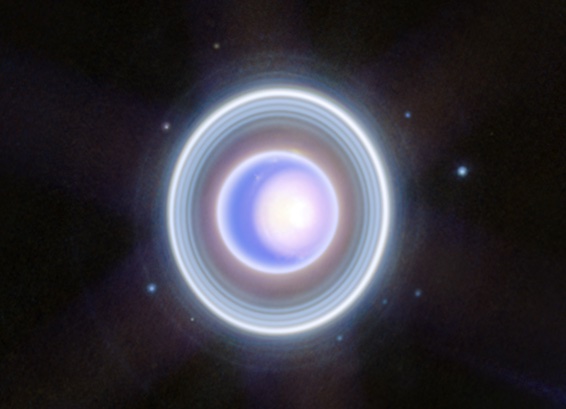The recent revelations brought forth by NASA captured by the James Webb Space Telescope (JWST) have transformed our understanding of Uranus, the ice giant with an intricate array of moons and rings. This article delves into the groundbreaking discoveries made by the JWST, enhancing our comprehension of this distant and enigmatic planet.

Uranus: A Brief Overview
Uranus stands out in our solar system due to its unique characteristics. It’s an ice giant, predominantly composed of a dense mix of water, gases, and a rocky core. The planet’s distinctive blue-green hue is attributed to its high methane content. Unlike Earth, a day on Uranus lasts a mere 17 hours, complicating efforts to capture detailed images of its surface and atmospheric phenomena.
Breakthrough Observations by James Webb Space Telescope
The James Webb Space Telescope has achieved a monumental feat in space exploration by capturing highly detailed images of Uranus. These images provide an unparalleled view of the planet’s seasonal ice cap and illuminate dynamic storms near its base.

Seasonal Variations and Atmospheric Phenomena
Uranus’s axial tilt of approximately 98 degrees results in extreme seasonal variations. One pole experiences continuous sunlight for a significant part of the Uranian year, leading to a prolonged 21-year winter on the opposite hemisphere. This unique orientation influences the planet’s weather patterns, including the formation and evolution of storms.
Moons and Rings: A New Perspective
The JWST has successfully imaged 14 of Uranus’s 27 known moons, some weaving their paths within its rings. Utilizing its advanced imaging capabilities and a range of filters, the telescope has brought into view even the faint Zeta ring, which typically escapes detection by other telescopes.
The Importance of James Webb’s Discoveries
These observations by the JWST are not just scientific triumphs but also a testament to human curiosity and ingenuity. Understanding Uranus’s complex climate, rotational dynamics, and ring system provides valuable insights into planetary science and the formation of our solar system.
Conclusion
The James Webb Space Telescope continues to redefine our perception of the cosmos. Its detailed study of Uranus offers a glimpse into the intricacies of one of our solar system’s most enigmatic planets, paving the way for further exploration and discovery. For a comprehensive exploration of Uranus and the latest discoveries made by the James Webb Space Telescope, visit NASA’s official website.





